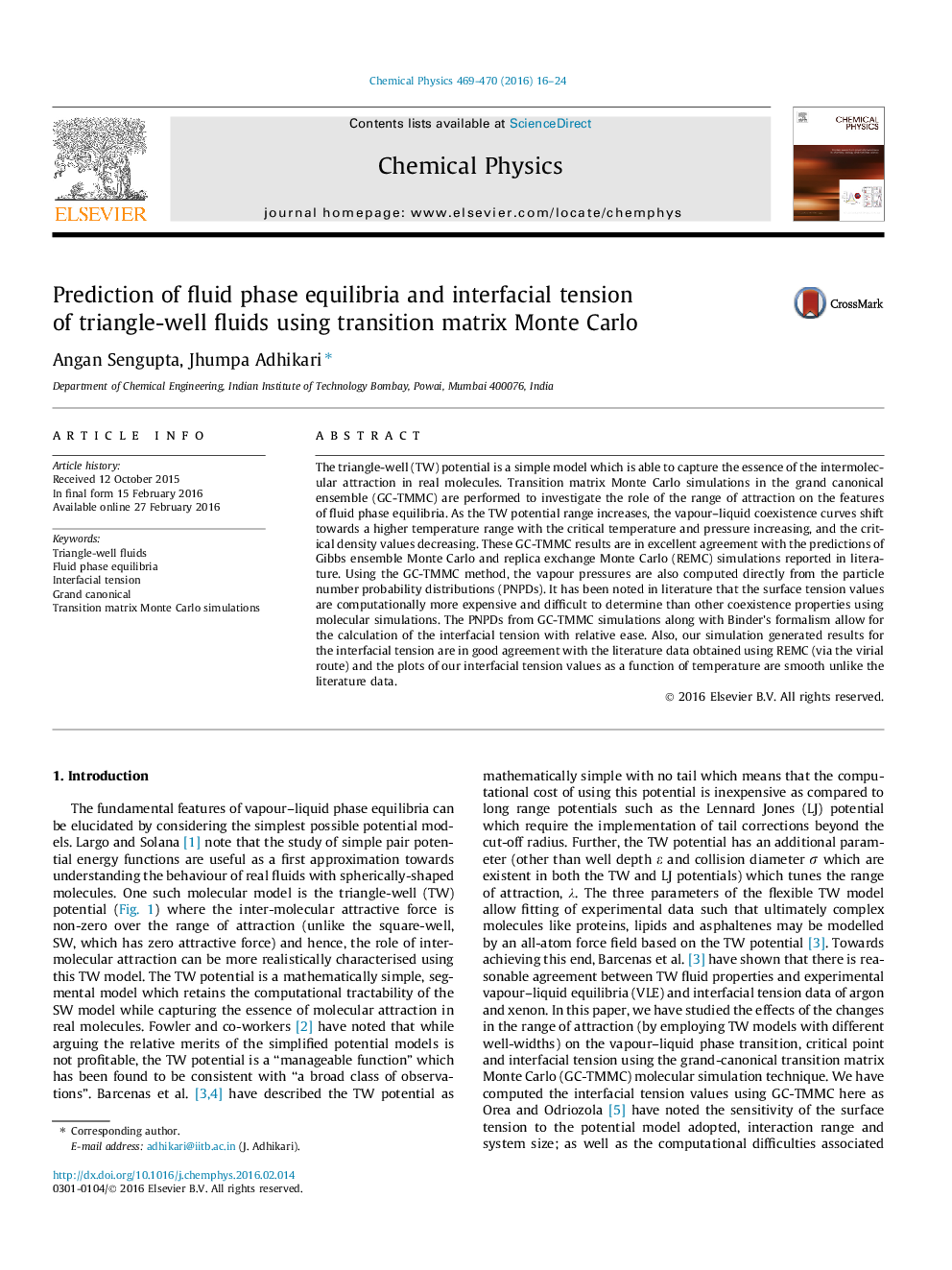| کد مقاله | کد نشریه | سال انتشار | مقاله انگلیسی | نسخه تمام متن |
|---|---|---|---|---|
| 5373022 | 1504198 | 2016 | 9 صفحه PDF | دانلود رایگان |
- Effect of range of intermolecular attraction on VLE and interfacial tension data.
- Fluid-fluid interactions: TW potential does not require long-range tail corrections.
- Particle number probability distributions (PNPDs) obtained from GC-TMMC simulations.
- Coexistence densities, vapour pressure and surface tension obtained directly from PNPD.
- VLE and surface tension results are in good agreement with data from GEMC and REMC.
The triangle-well (TW) potential is a simple model which is able to capture the essence of the intermolecular attraction in real molecules. Transition matrix Monte Carlo simulations in the grand canonical ensemble (GC-TMMC) are performed to investigate the role of the range of attraction on the features of fluid phase equilibria. As the TW potential range increases, the vapour-liquid coexistence curves shift towards a higher temperature range with the critical temperature and pressure increasing, and the critical density values decreasing. These GC-TMMC results are in excellent agreement with the predictions of Gibbs ensemble Monte Carlo and replica exchange Monte Carlo (REMC) simulations reported in literature. Using the GC-TMMC method, the vapour pressures are also computed directly from the particle number probability distributions (PNPDs). It has been noted in literature that the surface tension values are computationally more expensive and difficult to determine than other coexistence properties using molecular simulations. The PNPDs from GC-TMMC simulations along with Binder's formalism allow for the calculation of the interfacial tension with relative ease. Also, our simulation generated results for the interfacial tension are in good agreement with the literature data obtained using REMC (via the virial route) and the plots of our interfacial tension values as a function of temperature are smooth unlike the literature data.
54
Journal: Chemical Physics - Volumes 469â470, 1â13 May 2016, Pages 16-24
